|
Displaying items by tag: authorities
The Colonial Williamsburg Foundation in Virginia says it has offered to house Iraqi artifacts to protect them from destruction by the Islamic State group.
The foundation says its president, Mitchell Reiss, made the offer to a team of Iraqi archeologists and museum experts who visited earlier this month. Iraqi authorities say the Islamic State group has attacked and destroyed several archaeological sites.
Philippine authorities recovered on Tuesday more than a dozen paintings, including a work by Pablo Picasso, from an office and residences of lawmaker Imelda Marcos, a day after an anti-corruption court ordered their seizure.
The court ordered the family of the late dictator Ferdinand Marcos surrender eight paintings by famous European artists, declaring they had been illegally acquired with public funds.
A painting by Henri Matisse stolen more than a decade ago in Caracas and later recovered in an FBI sting is on display again in the Venezuelan capital.
The "Odalisque in Red Pants," worth around $3 million, was exhibited Tuesday for the first time in more than a decade at the Museum of Contemporary Art.
It had been replaced with a fake sometime between 1999 and 2002 and it was only in 2003 that Venezuelan authorities realized the original had been stolen.
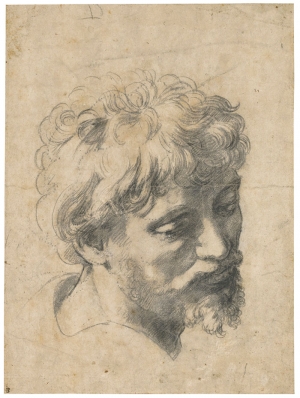
British authorities have lifted the export ban on Raphael’s drawing Head of a Young Apostle. The Old Master work will go to Leon Black, a New York-based billionaire who paid $47.9 million for it at Sotheby’s London in December 2012. The drawing, which was created between 1519 and 1520, was a study for the artist’s revered painting The Transfiguration, which resides in the Vatican’s collection.
The UK’s arts minister Ed Vaizey quickly placed the work under an export ban following the sale, which broke the auction record for a work on paper. The point of the ban was to provide enough time for an interested buyer to raise the money necessary to keep the drawing in the country. The ban expired on July 3, 2013 and was not extended.
Britain has recently employed a number of export bans on culturally significant works. Two pieces, which were purchased by the J. Paul Getty Museum in Los Angeles, are currently being held in the U.K. Officials are waiting to see if any buyers will step forward for a rare 15th century Flemish manuscript titled Roman de Gillion de Trazignes and Rembrandt Laughing, a self-portrait by the Dutch master. The Getty paid $5.8 million and $25 million for the works respectively.
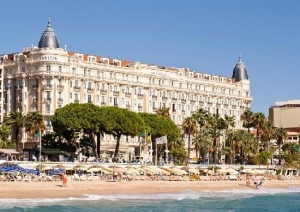
On Sunday, July 28, 2013, a gunman sneaked into the posh Carlton Intercontinental hotel in Cannes, France, held up a diamond show and made off on foot with $136 million worth of jewels. It was the biggest heist to take place in Cannes, a notorious hot spot for the rich and famous, in years.
Current investigations show that the suspect acted alone and wore a scarf, hat and gloves to disguise his identity. The thief entered through the hotel’s ground floor showroom, held up some of the show’s staff with a handgun, grabbed the valuables, and exited through a side door that led to a side street. The entire holdup took approximately sixty seconds and occurred while three security guards looked on.
The jewels were on display as part of a presentation highlighting the Leviev diamond house, which is owned by Israeli billionaire Lev Leviev. The show was slated to remain on view at the hotel through the end of August. The Carlton, a Cannes landmark, was famously featured in Alfred Hitchcock’s To Catch a Thief starring Grace Kelly and Cary Grant. The hotel is celebrating its 100th anniversary this year.
Investigations are still underway and French authorities are currently reviewing surveillance video footage.
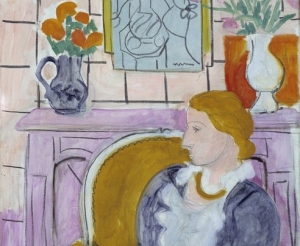
The descendants of a Parisian art dealer are demanding that the Henie Onstad Art Center near Oslo, Norway return Henri Matisse’s (1869-1954) Blue Dress in a Yellow Armchair (1937) to them. Nazis seized the painting from its owner, Paul Rosenberg, prior to the outbreak of World War II. Ultimately, Rosenberg, one of the most prominent French art dealers and a personal friend of Pablo Picasso and Matisse, fled to New York and survived the war.
The painting in dispute has been a celebrated part of the Onstad’s collection since the museum was established in 1968. The work was donated to the fledgling institution by art collector Niels Onstad and his wife Sonjia Henie, an Olympic figure skater. Museum Director Tone Hansen attests that Onstad and Henie bought the painting from the Parisian Galerie Henri Benezit in 1950, unaware of its troublesome provenance. Hansen was unaware that Nazis had stolen the painting until the Art Loss Register, an organization that tracks lost and stolen paintings, notified him in 2012.
Art Registry documents show that Rosenberg purchased Blue Dress in a Yellow Armchair directly from Matisse in 1937. Following World War II, Rosenberg attempted to re-establish his business and tried to recover the 400+ works that had been taken from him by the Nazis. The painting was marked on Rosenberg’s personal documents as missing after the war. He also reported the painting missing to French authorities in 1946.
While Rosenberg’s heirs hope that the painting will be returned to their family, Norwegian law states that if a person has had an item in good faith for over 10 years, they are deemed the rightful owner. However, the argument is in contrast to the Washington Conference Principles on Nazi-Confiscated Art, which Norway is a part of.
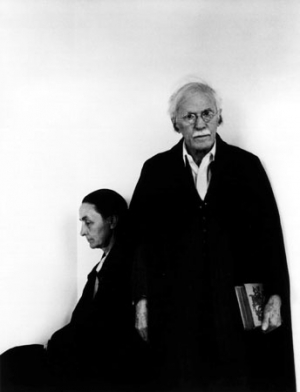
United States authorities have seized over 2,200 pieces of art by pioneering American photographers including Alfred Stieglitz (1864-1946) and Edward Weston (1886-1958). The works, which were sent from Texas to New Jersey last year, were relocated to a warehouse in New York in July 2012. Before they were seized, the works were supposed to be shipped to Spain where they would be exhibited in a private home.
The U.S. Attorney’s Office in Newark, New Jersey announced in a court filing that the works, which are valued at approximately $16 million, were purchased with funds from a scheme that sold fake credits for renewable energy. The leader of the ploy is Philip Rivkin, owner and CEO of the Houston-based company, Green Diesel. Rivkin is accused of using money fraudulently funneled through his business to buy the photographs. Rivkin has not yet been charged with a crime.
The seized artworks include multiple Stieglitz prints including one his wife, the artist Georgia O’Keeffe (1887-1986), which was sold for $675,000 and an Edward Steichen (1879-1973) print titled Greta Garbo for Vanity Fair, which was purchased for $75,000. The court filing, which was announced on Friday, March 1, 2013, asks Rivkin to forfeit the works to U.S. authorities.
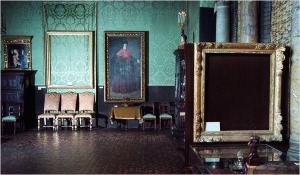
In March of 1990, two thieves posing as Boston police officers entered the Isabella Stewart Gardner Museum and stole thirteen works of art including masterpieces by Vermeer, Rembrandt, Edgar Degas, and Edouard Manet. Now known as the greatest art heist in history, the case has remained unresolved despite the countless hours of investigating the FBI has conducted. While the Bureau has offered immunity to anyone who assisted in the recovery of the artworks, they have never received a concrete lead.
While it would appear that the reputed organized crime figure, Robert V. Gentile, who found himself in federal court this Wednesday on drug trafficking and gun possession was irrelevant to the Gardner case, the FBI believed Gentile had vital information to share. Gentile, 76, of Manchester, Connecticut, helped federal authorities for 10 months prior to his arrest but none of the information was useful in tracking down the thieves. Gentile’s lawyer claims that his client did know some of the individuals the government believed were involved in the heist, but that most of them were dead by now. Gentile now faces a maximum of 150 years in prison if he is convicted. The government is willing to negotiate his sentence so that his prison term will be reduced to 46-57 months.
Gentile became involved in the Gardner case when Elene Guarente, the widow of Robert Guarente, a mob associated who died in 2005, told investigators that her husband gave Gentile a painting that he had kept in a tube since the 1990s.
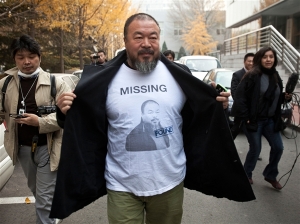
Fake Cultural Development Ltd., the design firm of dissident Chinese artist, Ai Wei Wei, will have its business license revoked by Chinese authorities. It is rumored that the district commercial affairs department will pull the license on the grounds that the company failed to re-register. The 55-year-old artist is a designer at the firm while his wife serves as the legal representative.
Ai Wei Wei has been under fire by the Chinese government since officials slammed him with a $2.4 million (15m yuan) tax evasion fine in 2011. His subsequent appeal was shut down in July and a Beijing court rejected his challenge to that decision last week. Ai claims that the firm was unable to properly renew their license because officials had confiscated the documents necessary to re-register during the tax evasion investigation.
Mr. Ai, China’s most famous contemporary artist, promises that the license fiasco will not affect his art. A critic of Communist Party rule, Ai Wei Wei caught the media’s attention when he was detained without explanation for nearly three months in 2011. Upon his release he was hit with the tax evasion claim and fine. Ai Wei Wei says an application has been submitted for a public hearing in regards to the revoked license.
|
|
|
|
|